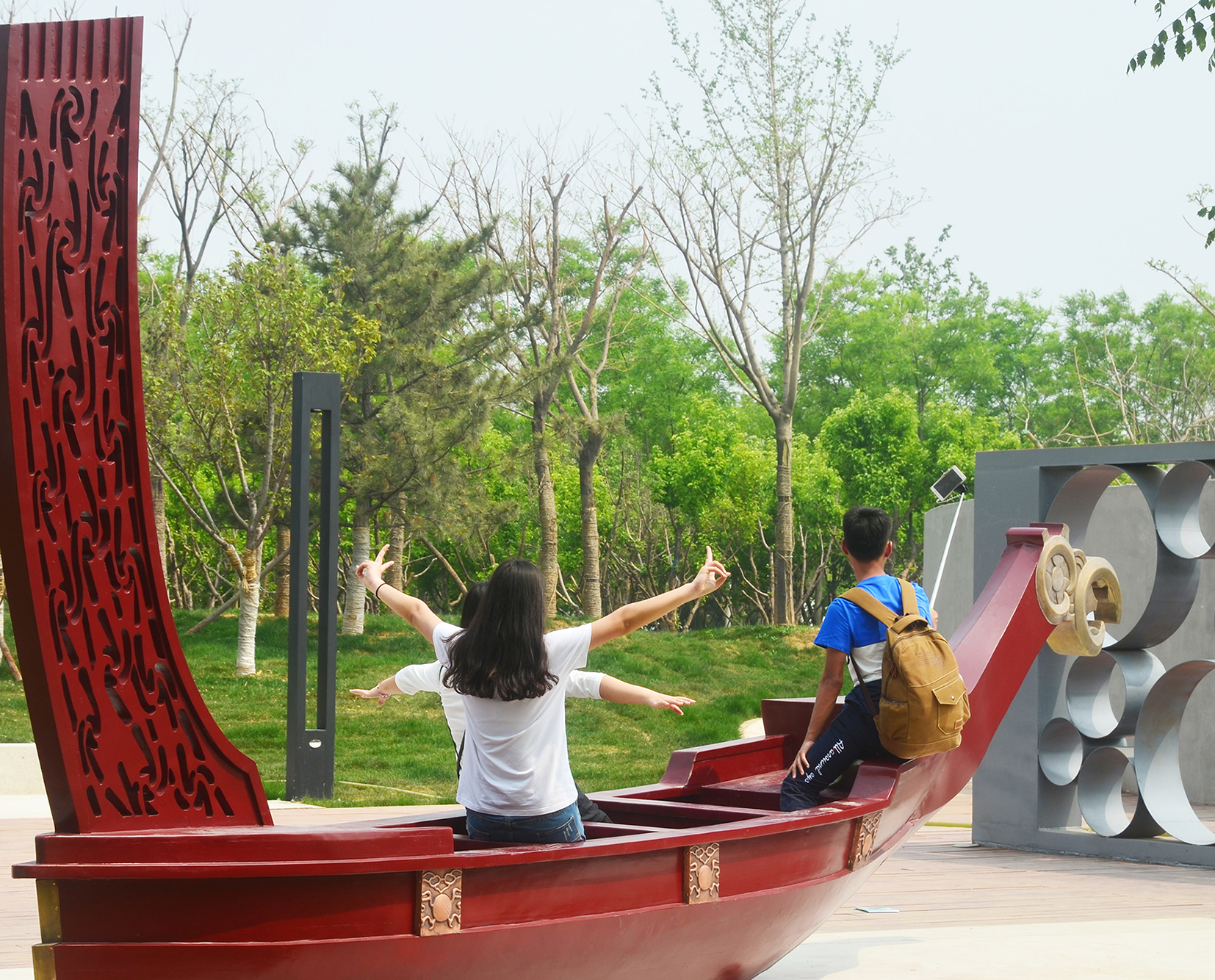The Life-Miracle Garden - celebrating our links with China
Over the last two years many millions of people have visited the Life-Miracle garden in the Chinese city of Tangshan. Designed by New Zealand landscape architects Dr Di Menzies and Garth Falconer, in collaboration with Ngai Tai artist Reuben Kirkwood, the garden tells a story of New Zealand’s relationship with China which actually goes back to around 1430 when Zheng He, the Ming dynasty Chinese Admiral, sailed his ship along our west coast.
“Our inspiration was the memories of New Zealand and Māori occupants which Zheng He’s sailors might have taken back to China,” says Garth Falconer, who runs Reset Urban Design.
The project began when Dr Menzies was invited to design a themed garden as part of the 2016 International Horticultural Expo in Tangshan. The expo was part of the city’s regeneration after it was devastated by a massive earthquake in 1976. Around 255,000 people were killed and the city virtually flattened. The expo coincided with the fortieth anniversary of the quake.
“We didn’t know much about Tangshan before we sped out there on the bullet train going about 300 km an hour,” Falconer explains. “Actually it’s a city of about eight million undergoing a massive remodelling of itself as an Eco city.”
Historically Tangshan was a coal and steel town, a hard heavy industry city. As part of it’s transformation a former coal mining wasteland was transformed into what’s now known as South Park, a lush peaceful 250 hectare park and lake where the expo was held. The Life-Miracle garden and other permanent displays from the expo remain there today.
Falconer says the New Zealanders Life-Miracle garden is allusive of the rebirth of China-Tangshan and New Zealand-Christchurch from earthquakes. “Obviously there were some parallels with New Zealand. We have suffered the trauma of earthquakes, upsetting our sense of stability and societal progress, so that was a really strong underlying link.
“Also it was a chance for us to tell a bit of a story about the relationship between New Zealand and China and recall there is also a Chinese narrative to the relationship. Whilst from a Eurocentric view we started to see Chinese gold miners in Central Otago in the mid 19th century. The Chinese narrative, their understanding of what New Zealand actually was stretched further back at least four or five centuries.
Menzies and Falconer used Chinese plants and materials as a way of visualising what Zheng He’s sailors may have described to their compatriots about our islands and culture back around 1430. Local craftspeople helped build the project while postgraduate students from the landscape architecture department at Beijing Forestry University under Professor Xiaoming Liu assisted with the development of the detail drawings.
Traditional Chinese garden elements like a moon gate, a high walled enclosure, abstract mountains, pools of water and terraces convey a facsimile of New Zealand. The North Island is a series of tall poles or pou whenua, lit from within, and a central path, while the South Island is a series of serrated walls within a pool of water, with Stewart Island portrayed as a simple anchor rock.
“There was this whole kind of spatial thing, of us getting our heads around the ancient traditional Chinese garden being a walled garden,” says Falconer. “And the significance of natural features like rocks, mountains, water and interpreting that through this kind of cross-cultural narrative.”
The finished garden was very well received. “They talked about the treasured gift we’d given them as part of their journey to redevelop the city.”
Falconer says in China horticulture and landscape design are revered as an ancient art, one that’s got not only cultural dimensions to it but also spiritual.
“It’s off the beaten track a bit(Tangshan’s about 300 km east of Beijing). But the garden’s there permanently, it’s now on the map there for Kiwis to make some sort of pilgrimage,” he laughs. And perhaps view our two countries relationship in a slightly different way.






